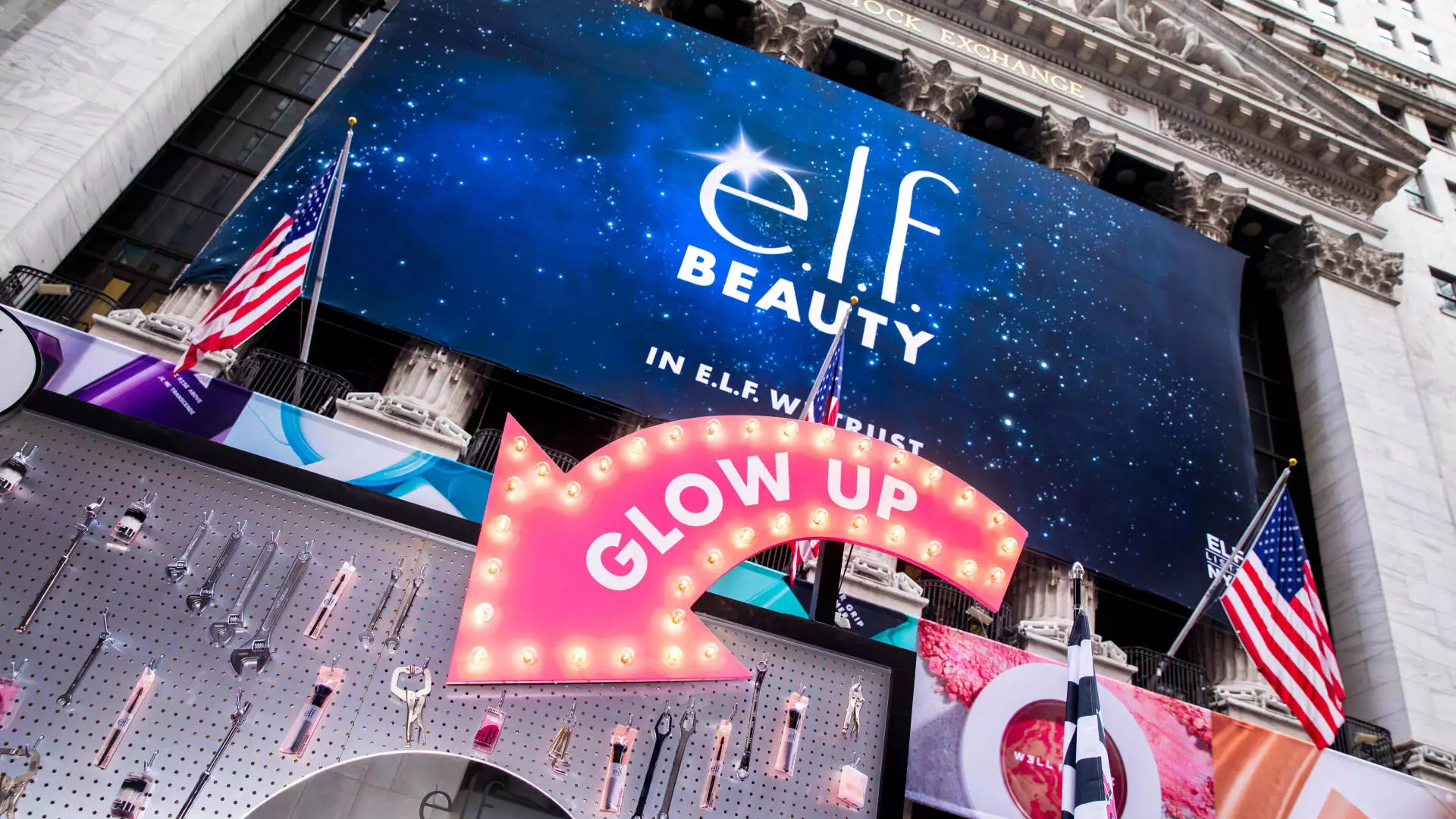The recent economic landscape has been tumultuous, particularly for companies heavily reliant on imports. The beauty industry, with its global supply chains and dependence on various manufacturing hubs, is feeling the squeeze of political tensions and tariff fluctuations. E.l.f. Beauty, a prominent player in the cosmetics sector, stands at the intersection of this uncertainty. The company’s CEO, Tarang Amin, expressed relief following the announcement of a new 10% tariff on goods imported from China. While this figure is markedly lower than earlier forecasts that hinted at tariffs reaching 60%, it nevertheless raises questions about pricing strategies and long-term ramifications for consumer products.
Pricing Strategy Considerations
The immediate concern for any business facing tariffs is whether to pass the cost on to consumers. Amin’s comments highlight a cautious approach; E.l.f. will wait to see how the tariff situation evolves before making pricing adjustments. This decision reflects a broader strategy employed by many companies operating in an unpredictable market. For example, while Mattel has indicated they may have to increase prices to cushion against potential profit loss, E.l.f. appears more contemplative about the trajectory of the tariffs. By not rushing to implement price hikes, the company can assess consumer response and competitive positioning in a market that is known for its sensitivity to price changes.
Historical Context and Corporate Adjustments
The historical context surrounding tariffs also sheds light on present strategies. During Trump’s initial term, the imposition of 25% tariffs led E.l.f. Beauty to increase prices on approximately one-third of its product line by one dollar. This tweak was met with a favorable consumer reaction, showcasing the brand’s ability to maintain its market presence even while navigating external pressures. Notably, the company has since reduced its dependency on Chinese manufacturing from nearly 100% to around 80%, a significant adjustment that positions them more resiliently in the face of fluctuating tariffs and supply chain disruptions.
Another key aspect of E.l.f.’s strategic response is its growing international business model. The company has diversified its sales channels beyond the U.S. market, an important move that may buffer against the impacts of domestic tariffs. Such international exposure not only helps in spreading risk but also opens doors for capturing consumer markets in regions less affected by the U.S.-China trade disputes. This multi-faceted strategy enables E.l.f. to pivot from the challenges posed by tariffs and leverage its global reach.
Amin points out that while the current fiscal year remains largely unaffected by the new tariffs, the implications could begin to manifest significantly in the upcoming fiscal years, particularly FY 2026. This foresight stresses the need for companies to remain agile and proactive in their operations. The uncertainty surrounding tariffs necessitates an adaptable supply chain model that can swiftly respond to changing geopolitical climates. For E.l.f. Beauty, continuing to innovate and diversify will be crucial in maintaining its competitive edge.
E.l.f. Beauty’s strategic navigation of tariff impacts is a testament to the complexities faced by modern businesses in a globally interconnected economy. As tariffs fluctuate and geopolitical tensions intensify, the beauty giant’s emphasis on careful pricing strategies, reduced reliance on specific manufacturing hubs, and an increasing international focus will be pivotal in determining its success moving forward. The ability to adapt and respond to such challenges will be critical as the company seeks to thrive amidst uncertainty, making vigilance and flexibility essential components of their corporate strategy.

